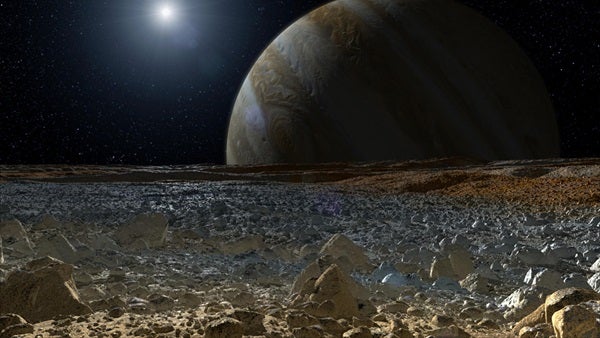“If one day humans send a robotic lander to the surface of Europa, we need to know what to look for and what tools it should carry,” said Robert Pappalardo from NASA’s Jet Propulsion Laboratory in Pasadena, California. “There is still a lot of preparation that is needed before we could land on Europa, but studies like these will help us focus on the technologies required to get us there and on the data needed to help us scout out possible landing locations. Europa is the most likely place in our solar system beyond Earth to have life today, and a landed mission would be the best way to search for signs of life.”
The team found the most important questions clustered around composition: What makes up the reddish “freckles” and reddish cracks that stain the icy surface? What kind of chemistry is occurring there? Are there organic molecules, which are among the building blocks of life?
Additional priorities involved improving our images of Europa — getting a look around at features on a human scale to provide context for the compositional measurements. Also among the top priorities were questions related to geological activity and the presence of liquid water: How active is the surface? How much rumbling is there from the periodic gravitational squeezes from its planetary host, the giant planet Jupiter? What do these detections tell us about the characteristics of liquid water below the icy surface?
“Landing on the surface of Europa would be a key step in the astrobiological investigation of that world,” said Chris McKay from NASA Ames Research Center in Moffett Field, California. “This paper outlines the science that could be done on such a lander. The hope would be that surface materials, possibly near the linear crack features, include biomarkers carried up from the ocean.”










